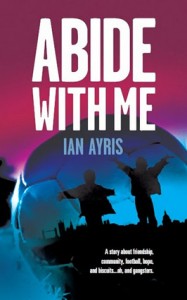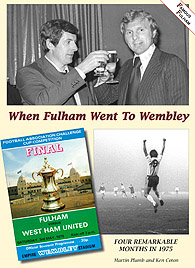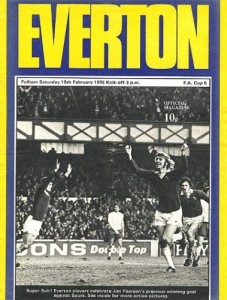Book Review: Abide with Me by Ian Ayris
 It’s funny how at particular times in your life, little coincidences and things seem to come together. Take for instance the week that has gone by. Last Saturday evening I stepped off the stage after the last of four performances of the Agatha Christie play “And Then There Were None”. It’s a classic crime thriller set in 1930’s England, which despite a story-line which ultimately sees ten deaths, is all done in a language and manner that is not particularly dark or sinister, but is all rather wizard, what. Then the first book I find myself reviewing after my finishing at the theatre is from the stable of Caffeine Nights Publishing, who produce crime and contemporary fiction, “…aimed at the heart and the head…”.
It’s funny how at particular times in your life, little coincidences and things seem to come together. Take for instance the week that has gone by. Last Saturday evening I stepped off the stage after the last of four performances of the Agatha Christie play “And Then There Were None”. It’s a classic crime thriller set in 1930’s England, which despite a story-line which ultimately sees ten deaths, is all done in a language and manner that is not particularly dark or sinister, but is all rather wizard, what. Then the first book I find myself reviewing after my finishing at the theatre is from the stable of Caffeine Nights Publishing, who produce crime and contemporary fiction, “…aimed at the heart and the head…”.
Now given that this is a football website you may be wondering why this book has been reviewed? Well basically because there is a football element that runs through the novel. The title itself, “Abide with Me”, refers to the hymn which is sung before the FA Cup Final (and first started in 1927 for the Final between Arsenal and Cardiff City), with central character and narrator, John Sissons cast as a West Ham United supporter. Indeed the FA Cup Final’s of 1975 and 1980 in which The Hammers took part in, are key to the story.
The football theme is also evident on the cover of the novel in a couple of ways. Firstly the colour scheme used is claret and blue, those of West Ham and secondly there is an image of a football showing in silhouette two boys set against the London sky-line. The book itself is 150 pages long, consisting of 27 snappy and sharp chapters. I did read it in just two sittings and was thoroughly engaged throughout and thus ensured I wanted to keep reading and turning the pages to find out what happened next.
“Abide with Me” can be classified as crime fiction, as with “And Then There Were None”, but they live in very different times with very different language. Christie’s setting of the 1930’s in the rural scenic beauty of Devon is a world away to the brutality of East London in the 1970’s and 80’s created by Ian Ayris in his novel. Indeed the tough landscape is reflected in the language of the books chronicler, John Sissons, which is loaded with expletives and East London expression. Personally I’ve nothing against the London style accent as it helped create a voice in my head which reinforced the story-telling and visualisations of the characters. In terms of the swearing, I’d have to say that at times I thought it was unnecessary, and its overuse meant that it lost some impact.
The novel begins on 5th May 1975 and it set against the back-drop of the FA Cup Final between West Ham and Fulham. As The Hammers lift the Cup, mass celebrations break out in the Sissons’ household, John has his first encounter with the other main character of the book, Kenny. The joy and warmth of John’s family is quickly set in contrast to that of Kenny where there is a “…racket goin on in the house like you wouldn’t fuckin believe. Shoutin and crashing and breakin, and shit…”
That first meeting is the start of a friendship that runs through the 15 years or so that the novel travels. Ian Ayris perfectly creates a believable, but tough world as the boys emerge through school into adult life. The harshness of existence in terms of how people treat each other is all here to see. From the bullying that children inflict on each other, to abuse within marriage and the misuse of power and trust. However, that is not to say this novel is all gloom and doom. There is comedy, warmth and no little hope. Again, these positive elements of the story are well observed and I could directly relate to the bond John has when attending games at Upton Park with his father.
Whether you like football or not, this is a book I would recommend. It is gritty and takes you on a journey through some dark places in terms of human nature and behaviour. However, we know that life is about the ups and downs and the good and bad. “Abide with Me” hits all those notes and Caffeine Nights desire to provide “…fiction aimed at the head and the heart…”


 Cup Final day itself is covered in glorious detail both in words and images, from the players being in the hotel in the morning, the journey to the Wembley, the pre-match build-up and the game itself. Of course, history tells us that there was no fairytale for Mullery and Moore and that feeling of deflation, almost anti-climax, after the game is something I can still remember. The book then closes with typical Ashwater Press attention to detail, as the story of 1975 is placed in context. There are memories from both Martin Plumb and Ken Coton of that incredible four months, as well as David Hamilton. A postscript and epilogue detail how just three years after the Cup Final only Les Strong remained at the club and the part a 20th Anniversary ‘replay’ between Fulham and West Ham had in raising much needed funds during the dark days of the mid-nineties. The ‘Where are they now?’ section is a joy as the reader discovers what happened to those heroes of 1975, but is tinged with sadness as ‘In Memoriam’ reminds us of those no longer with us who were involved in that incredible journey – Chappie D’Amato, Bill Taylor, Tommy Trinder, Bobby Moore, Ted Drake, Alec Stock and Roy Woolnough.
Cup Final day itself is covered in glorious detail both in words and images, from the players being in the hotel in the morning, the journey to the Wembley, the pre-match build-up and the game itself. Of course, history tells us that there was no fairytale for Mullery and Moore and that feeling of deflation, almost anti-climax, after the game is something I can still remember. The book then closes with typical Ashwater Press attention to detail, as the story of 1975 is placed in context. There are memories from both Martin Plumb and Ken Coton of that incredible four months, as well as David Hamilton. A postscript and epilogue detail how just three years after the Cup Final only Les Strong remained at the club and the part a 20th Anniversary ‘replay’ between Fulham and West Ham had in raising much needed funds during the dark days of the mid-nineties. The ‘Where are they now?’ section is a joy as the reader discovers what happened to those heroes of 1975, but is tinged with sadness as ‘In Memoriam’ reminds us of those no longer with us who were involved in that incredible journey – Chappie D’Amato, Bill Taylor, Tommy Trinder, Bobby Moore, Ted Drake, Alec Stock and Roy Woolnough.